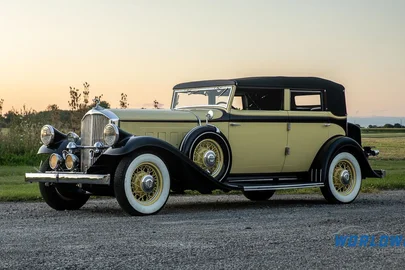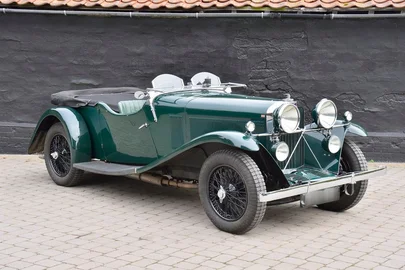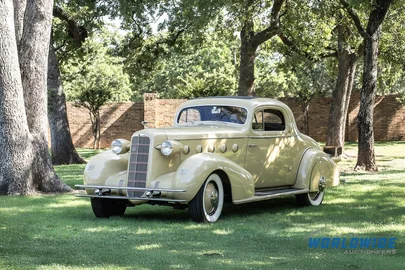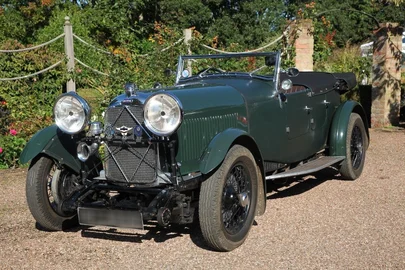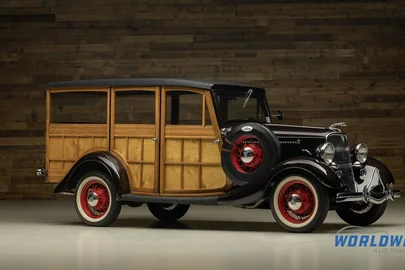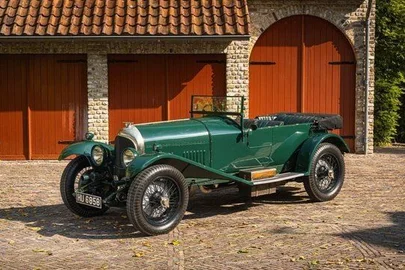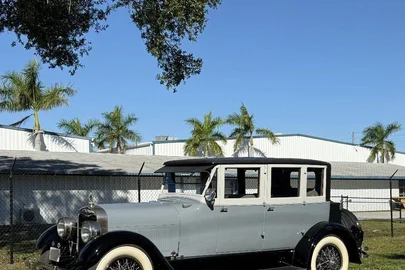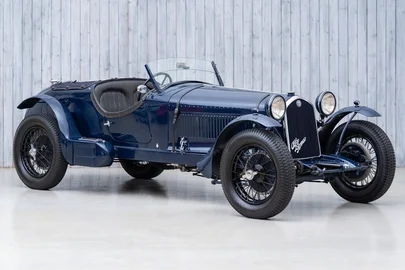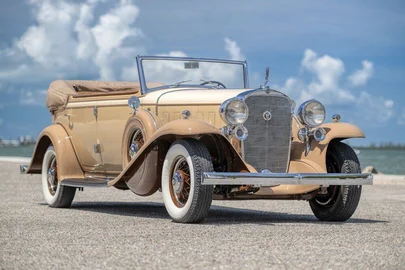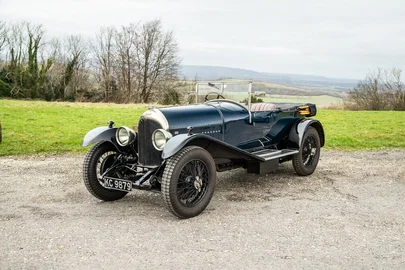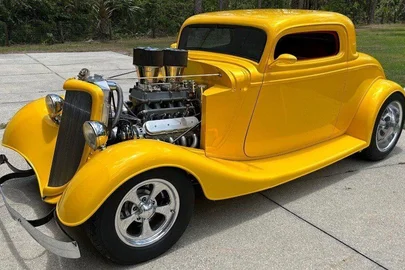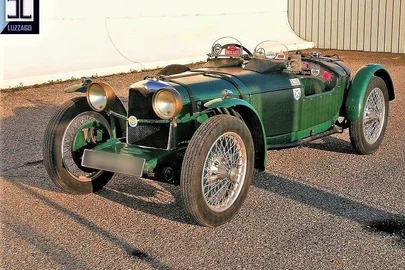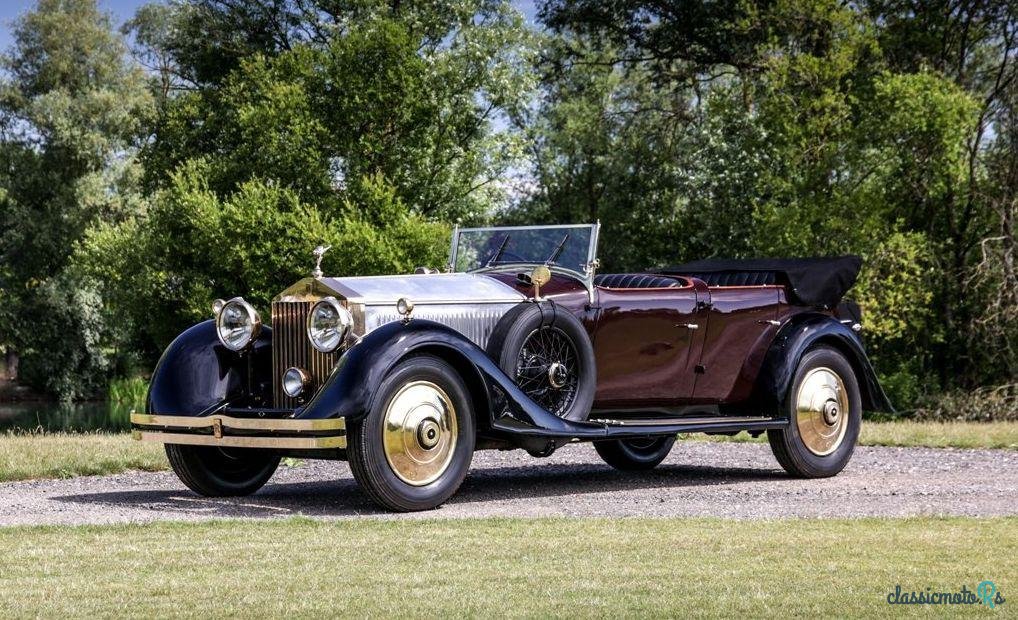
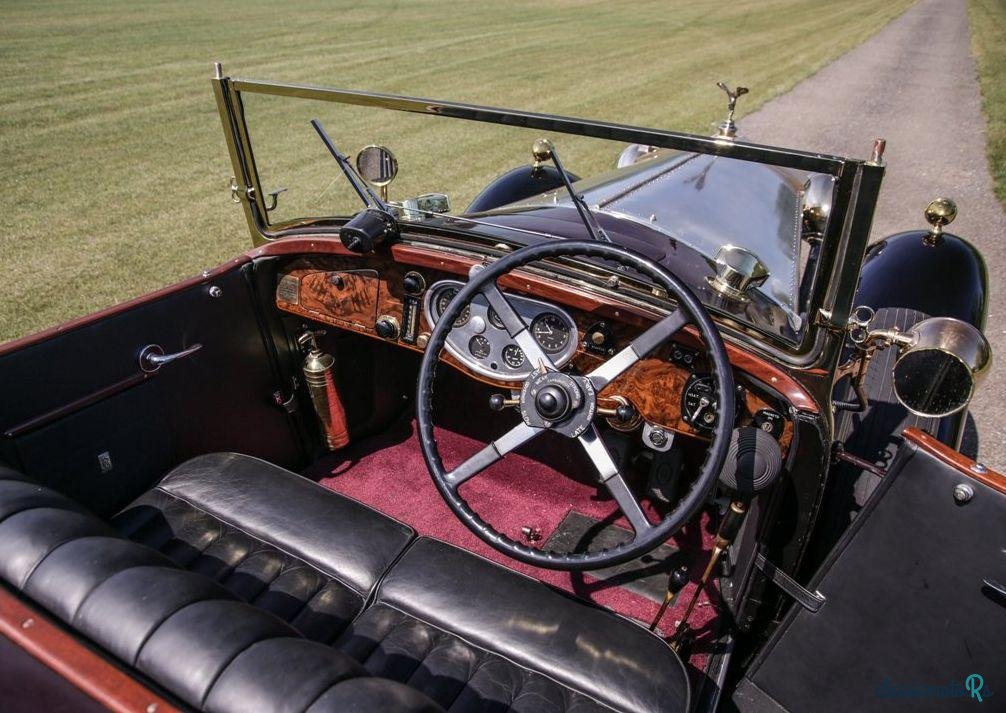
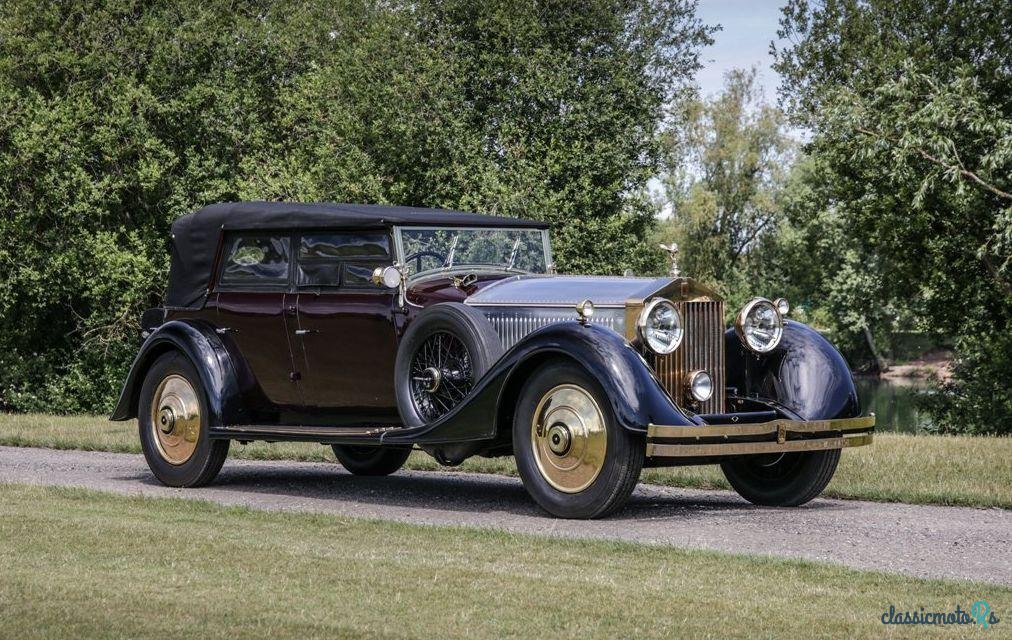
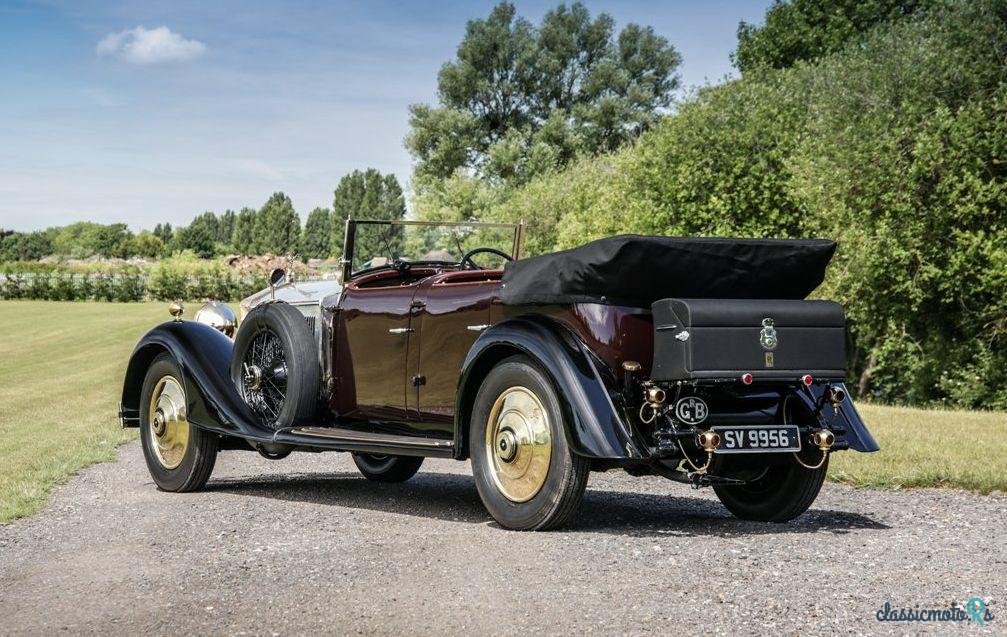
4 fotos
1929' Rolls-Royce Phantom Ii Open Tourer By Barker
Quéjate de este anuncio!Califica esto!Marcar esto
NegociablePublicado 5 julio 2020
Actualizado 5 julio 2020ID: MOqgQS
Actualizado 5 julio 2020ID: MOqgQS
Caducado
hace 5 años, 5 meses
hace 5 años, 5 meses
Information from the owner
Edad: 91 años
Color exterior: Plata
Comentarios del vendedor sobre 1929' Rolls-Royce Phantom Ii Open Tourer By Barker
For sale by auction on Saturday 18th July 2020 with Historics auctions.
Registration SV 9956
Chassis Number 45GN
Odometer reading 19734
Estimate £170000-£190000
Reputedly the last model that Henry Royce designed himself, the Phantom II was introduced in 1929 as a successor to the New Phantom (retrospectively Phantom I) with deliveries commencing in September of that year. Unlike its predecessor, which inherited its underpinnings from the preceding 40/50hp model, the Silver Ghost, the Phantom II employed an entirely new chassis laid out along the lines of that of the smaller 20hp Rolls-Royce. Built in two wheelbase lengths, 144" and 150", this new low-slung frame, with its radiator set well back, enabled coachbuilders to body the car in the modern idiom, creating sleeker designs than the upright ones of the past. The Phantom II used a refinement of the Phantom I's 7.7 litre (7,668 cc) pushrod-OHV straight-six engine with a new crossflow cylinder head. Unlike on previous 40/50hp models, the engine was bolted directly to the four speed manual transmission. Synchromesh was added on gears three and four in 1932 and on gear two in 1935. Power was transmitted to the rear wheels using an open driveshaft, a hypoid bevel final drive, and Hotchkiss drive, replacing the torque tube from a remotely mounted gearbox used on earlier 40/50hp models.
On 17th October, 1929, his excellency Sr. Marqués de Larios of Spain ordered this long wheelbase Rolls-Royce from the factory in London, believed to be on behalf of King Alfonso of Spain, and the request was for a Hooper Sedanca de Ville body to be fitted. Over 10 custom changes were made to the car especially for the Marqués, including gunmetal brass fittings, dictograph speaking tube, P-100 Lucas 'King of the Road' headlamps, dropping division window, adjustable rear seats, folding jump seats, centre fitted cocktail cabinet, cigarette drawer in the centre armrest and two side wheel carriers with centre hubs.
This fabulous vehicle comes with copies of the original build specification paperwork and appears to have a very interesting history. At some point its Sedanca de Ville body was changed for a saloon body with coachwork by Bohman and Schwartz of Pasadena USA, after it was exported to the USA and was owned by Lord Rothschild of the banking and wine dynasty whilst in saloon configuration.
Between 1965 and 1967, this fabulous Rolls-Royce was subjected to a very comprehensive restoration by leading Swiss company, S.A. Du Garage de l'Athénée based in Geneva.
The Barker Open Tourer body (no: 6859) which was fitted to the car recently, was originally ordered by the Maharaja of Bhavnagar in 1929 to replace the original body on his 6½ litre Bentley Speed Six. Over recent years this Barker body has been refurbished to include a new black hood with side screens, updated interior to include beautiful burr walnut dashboard, which provides the perfect setting for the brass instrumentation. The seats are covered with black leather and a drinks cabinet adorns the rear of the front seats for the pleasure of the passengers in the rear. The car is powered by the powerful and quiet 7.7 litre straight-six engine mated to a manual gearbox.
Marrying these two major historical elements of Rolls-Royce and Barker has resulted in a very elegant and imposing open tourer. Chassis 45GN retains much of its originality including matching numbers engine, gearbox and axle. It is also worth mentioning that 45GN was specified as requiring all brightwork including instrumentation to be finished in brass gunmetal throughout and as can be observed along with the Royal Burgundy and black paint finish, provides for a most striking and appealing example of British engineering and styling.
Registration SV 9956
Chassis Number 45GN
Odometer reading 19734
Estimate £170000-£190000
Reputedly the last model that Henry Royce designed himself, the Phantom II was introduced in 1929 as a successor to the New Phantom (retrospectively Phantom I) with deliveries commencing in September of that year. Unlike its predecessor, which inherited its underpinnings from the preceding 40/50hp model, the Silver Ghost, the Phantom II employed an entirely new chassis laid out along the lines of that of the smaller 20hp Rolls-Royce. Built in two wheelbase lengths, 144" and 150", this new low-slung frame, with its radiator set well back, enabled coachbuilders to body the car in the modern idiom, creating sleeker designs than the upright ones of the past. The Phantom II used a refinement of the Phantom I's 7.7 litre (7,668 cc) pushrod-OHV straight-six engine with a new crossflow cylinder head. Unlike on previous 40/50hp models, the engine was bolted directly to the four speed manual transmission. Synchromesh was added on gears three and four in 1932 and on gear two in 1935. Power was transmitted to the rear wheels using an open driveshaft, a hypoid bevel final drive, and Hotchkiss drive, replacing the torque tube from a remotely mounted gearbox used on earlier 40/50hp models.
On 17th October, 1929, his excellency Sr. Marqués de Larios of Spain ordered this long wheelbase Rolls-Royce from the factory in London, believed to be on behalf of King Alfonso of Spain, and the request was for a Hooper Sedanca de Ville body to be fitted. Over 10 custom changes were made to the car especially for the Marqués, including gunmetal brass fittings, dictograph speaking tube, P-100 Lucas 'King of the Road' headlamps, dropping division window, adjustable rear seats, folding jump seats, centre fitted cocktail cabinet, cigarette drawer in the centre armrest and two side wheel carriers with centre hubs.
This fabulous vehicle comes with copies of the original build specification paperwork and appears to have a very interesting history. At some point its Sedanca de Ville body was changed for a saloon body with coachwork by Bohman and Schwartz of Pasadena USA, after it was exported to the USA and was owned by Lord Rothschild of the banking and wine dynasty whilst in saloon configuration.
Between 1965 and 1967, this fabulous Rolls-Royce was subjected to a very comprehensive restoration by leading Swiss company, S.A. Du Garage de l'Athénée based in Geneva.
The Barker Open Tourer body (no: 6859) which was fitted to the car recently, was originally ordered by the Maharaja of Bhavnagar in 1929 to replace the original body on his 6½ litre Bentley Speed Six. Over recent years this Barker body has been refurbished to include a new black hood with side screens, updated interior to include beautiful burr walnut dashboard, which provides the perfect setting for the brass instrumentation. The seats are covered with black leather and a drinks cabinet adorns the rear of the front seats for the pleasure of the passengers in the rear. The car is powered by the powerful and quiet 7.7 litre straight-six engine mated to a manual gearbox.
Marrying these two major historical elements of Rolls-Royce and Barker has resulted in a very elegant and imposing open tourer. Chassis 45GN retains much of its originality including matching numbers engine, gearbox and axle. It is also worth mentioning that 45GN was specified as requiring all brightwork including instrumentation to be finished in brass gunmetal throughout and as can be observed along with the Royal Burgundy and black paint finish, provides for a most striking and appealing example of British engineering and styling.
